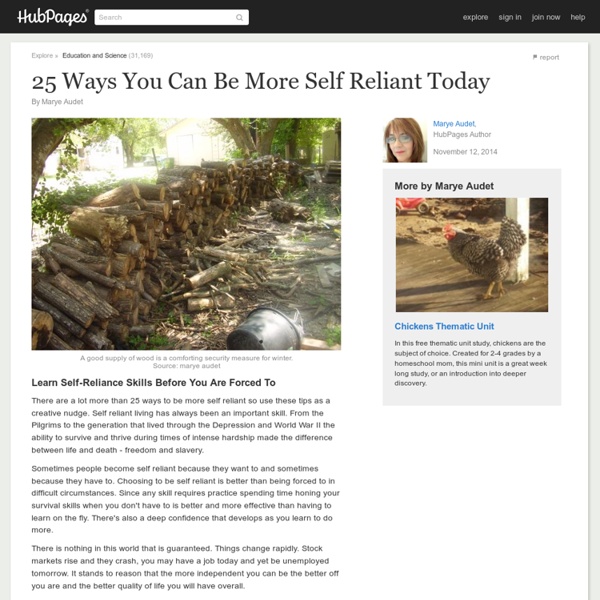25 Ways to be More Self Reliant Today

Primitive Technology, Traditional Skills and Hand-Made Tools
Square Foot Gardening 101
Update! Check out our new Square Foot Gardening Infographic for even more tips, diagrams, a plant list and much more. I recently stumbled upon a book (All New Square Foot Gardening: Grow More in Less Space! I know just enough about gardening to know that I am not very good at it, and that it is a lot of work. What is Square Foot Gardening? The idea behind square foot gardening is that you can plant fruits, vegetables and flowers in raised beds, above infertile soil and even out of the reach of pets. Materials Needed to Set Up a Square Foot Garden Material costs are variable, depending on the size of garden you plan to build. (1) Sheet untreated plywood – $0.00 (leftover scrap from a previous home improvement project) (2) 2x6x8 pieces of untreated lumber – $7.38 Don’t get treated lumber because treatments can seep into the soil and contaminate your planting area. (8) #6 x 1″ Wood Screws – $0.98 These were used to anchor the nylon line to create a grid system for the 1×1 planting plots.
Bacon and Eggs
motherfucking recipes
Keep reading Anonymous asked: Just wanted to make a suggestion: pumpkin/squash sauces are, like, 500,000x better with spicy something. My mom used to make this killer Chipotle pumpkin sauce all the time, and I've also experimented quite successfully with curry. I’ll have to try that, I still have a bunch of my sauce left. Expectation vs. Or; Actually eating the things you cook is usually way less pretty than food photographers want you to think. A USE FOR THE GOURD THAT ISN’T DESSERT. Keep reading Sometimes even the best baked goods end up looking huge and exploded, but they all taste fantastic, so who gives a fuck? SO! Keep reading Keep reading Keep reading As a side note, I apologize for a two-year-long sorta-hiatus. I needed to get my shit together, and now I’ve got my fighting spirit back! Out of curiosity, I might have some recipes that people want to see in particular… any suggestions? Keep reading
I Will Knot!
Pickle Me Too
Prepper.org
Related:
Related:



